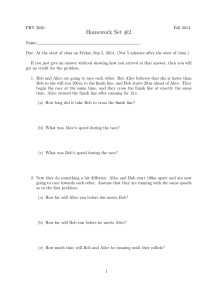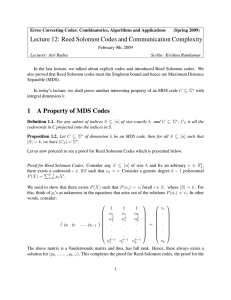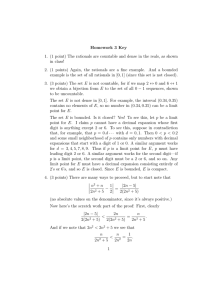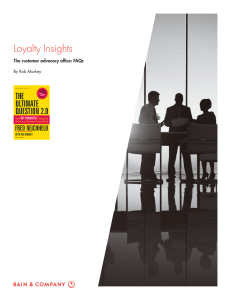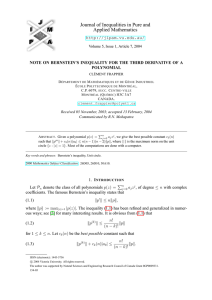Lecture 14: Randomized Communication Complexity
advertisement
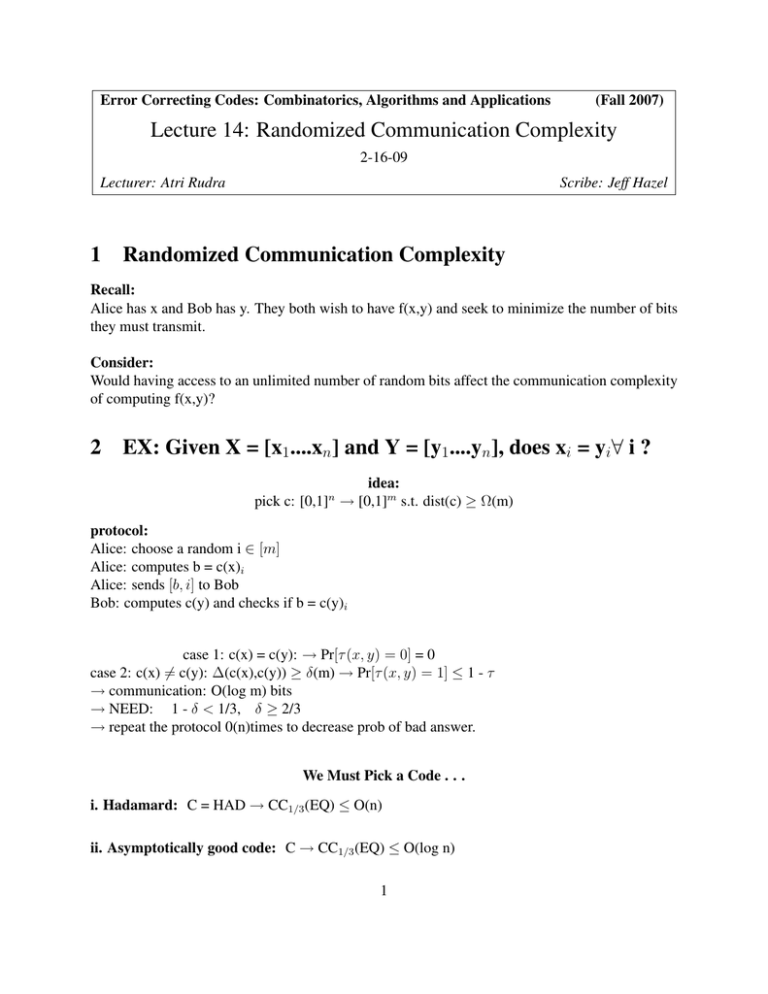
Error Correcting Codes: Combinatorics, Algorithms and Applications (Fall 2007) Lecture 14: Randomized Communication Complexity 2-16-09 Lecturer: Atri Rudra 1 Scribe: Jeff Hazel Randomized Communication Complexity Recall: Alice has x and Bob has y. They both wish to have f(x,y) and seek to minimize the number of bits they must transmit. Consider: Would having access to an unlimited number of random bits affect the communication complexity of computing f(x,y)? 2 EX: Given X = [x1....xn] and Y = [y1....yn], does xi = yi∀ i ? idea: pick c: [0,1]n → [0,1]m s.t. dist(c) ≥ Ω(m) protocol: Alice: choose a random i ∈ [m] Alice: computes b = c(x)i Alice: sends [b, i] to Bob Bob: computes c(y) and checks if b = c(y)i case 1: c(x) = c(y): → Pr[τ (x, y) = 0] = 0 case 2: c(x) 6= c(y): ∆(c(x),c(y)) ≥ δ(m) → Pr[τ (x, y) = 1] ≤ 1 - τ → communication: O(log m) bits → NEED: 1 - δ < 1/3, δ ≥ 2/3 → repeat the protocol 0(n)times to decrease prob of bad answer. We Must Pick a Code . . . i. Hadamard: C = HAD → CC1/3 (EQ) ≤ O(n) ii. Asymptotically good code: C → CC1/3 (EQ) ≤ O(log n) 1 CC1/n (EQ) ≤ O(log2 n) Q: Can we do better? . . . . TRICK: pick c to be a q-ary code s.t.: n2 ≤ q ≤ 2n2 CC = O(log m + log q), δ ≥ 1 - 1/n NEED: *1: log m = O(log n), *2: δ ≥ 1 - 1/n REED-SOLOMON: [m, n, m − n + 1]q codes q ≤ m. pick q s.t. it is a prime power ↓ power of 2 → n 2 ≤ q ≤ 2n2 for simplicity: m = q → *1: log m = O(log n), since q ≤ 2n2 → *2: δ ≥ 1 - n/m ≥ 1 - 1/n (because n2 ≤ m) → CC1/n (EQ) = O(log n) R vs δ 2 3




